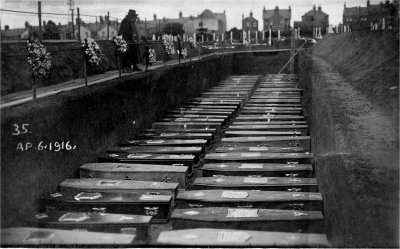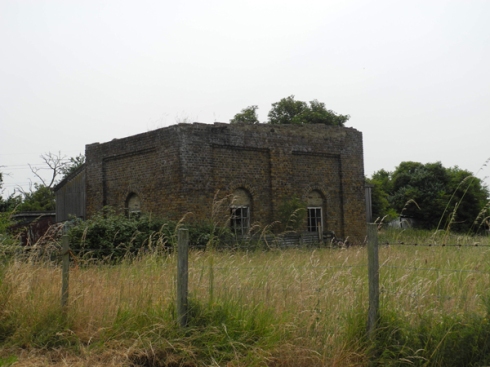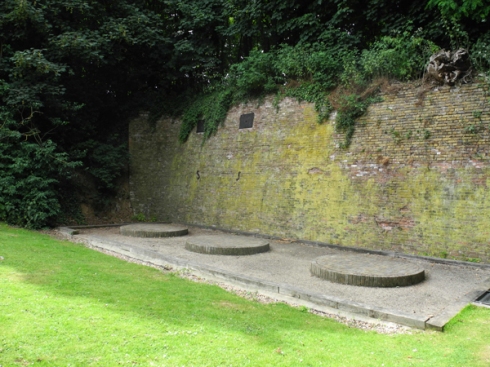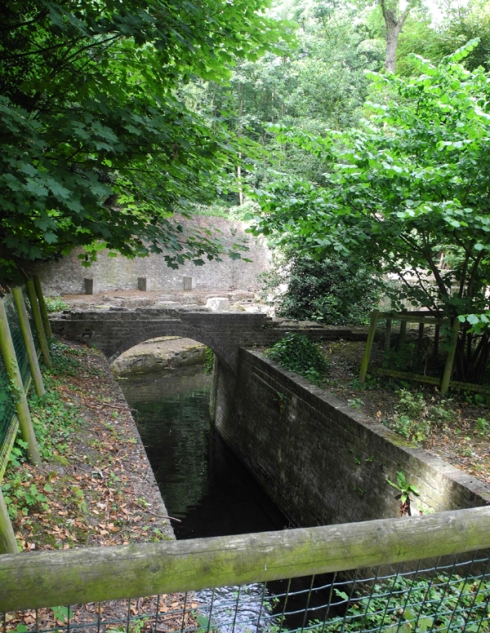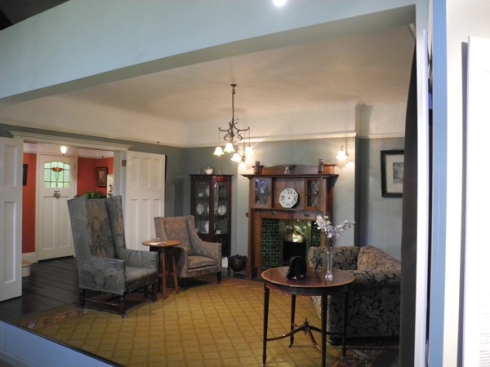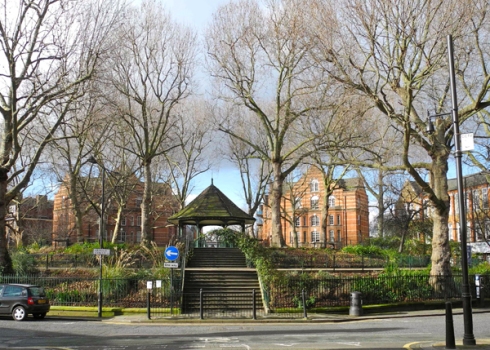You are currently browsing the monthly archive for February 2014.
The story of the tragedy of explosives workers of Faversham 1916 never made it into the newspapers of the day. In fact, it was kept a secret. On 2nd April 1916 there was a huge explosion that was heard as far away as Norwich and most of the coastal towns along the estuary. It resulted in 108 fatalities and 172 casualties.
Such was the extent of the disaster that a mass grave was dug for 69 of the victims in the the cemetery in Love Lane Faversham. Almost a hundred years later a visitor can still be overcome by the scale of the grave. The inscription reads:
“ Sacred to the memory of the men who died in the service of their country 2nd April 1916. Father in thy gracious keeping leave we now thy servants sleeping.”
No mention in the inscription of the accident because the country was plunged in the First World War and this was a military secret. At the time, there were many rumours about how a fire started in the Explosive’s Loading Company. One was that the fire had been started by a German spy. There was an official report of the accident by His Majesty’s Inspector of Explosives which concluded that a fire from a chimney spread to 15 tons of TNT and 150 tons of ammonium nitrate. Sadly, it also concluded that the supply of water hydrants and qualified firemen (they most certainly would have been men at this time) were insufficient. It also cited human error. A poignant reminder of war-time conditions when the country was desperate to increase the out-put of munitions badly needed on the front.
The site of the explosion was at Uplees on the River Swale. It’s hard to believe that once, this isolated spot was once the centre of an explosives factory as much of this land has been returned to pasture. One isolated building remains which, according to contemporaneous maps, is likely to have been the gatehouse to the factory.
Close by is the Oare Gunpowder Works which dates back to the late C17th. It became part of the Nobel company in he 1920s later renamed Imperial Chemical Industries. It closed in 1934 and many of the buildings were demolished.
Some of the machinery was moved to Ardeer in Ayrshire in Scotland. Now it is a country park that has a heritage trail that take you around the remains of the buildings.

Woolwich Royal Arsenal is now is a residential complex with its fare share of luxury apartments with riverside views, anxiously awaiting the opening of Crossrail to boost prices even more. It dates back to the C17th and has a remarkable number of listed industrial buildings. Over 20 Grade 1 and 2 buildings now refurbished into apartments. It’s difficult to imagine that towards the end of the C19th this was one of the world’s largest heavy plants manufacturing arms. During the First World War that it went through a massive expansion.
War on an industrial scale required a lot more ammunition. Lloyd George stated that during the fortnight of fighting in and around Neuve Chapelle almost as much ammunition was spent by the artillery as during the whole of the two and half years of the Boer War. The Royal Arsenal needed more workers. By January 2015 there were 30,000 rising to 75,000 in 1917. Of these 28,000 workers were women. The expanding workforce came from all parts of the country and needed somewhere to live. In the Kentish Independent May 1915 a local doctor wrote about the health risks of overcrowding with many families taking up to 8 lodgers in their modest artisan dwellings.
A new Garden City opened in 1916 with an additional 1200 homes but this still didn’t meet the demand. From January 1916 the building works department of the Royal Arsenal began erecting “hutments” in Eltham and along Wickham Lane in Plumstead.
Work in the Royal Arsenal was hard and dangerous. Men worked up to 96 hours a week. Medical advice to them included taking a bowl of beef broth on arrival home, a sponge down followed by a quiet rest and a smoke!
Working class women had always done paid employment but now they had to replace men in heavy industry working twelve hours including night shift. They became known as “munitionettes”. Its a wonder how they had the time to form bands like this one – The Jolly Boys Concert Party.
In 1916 Cyril Henry Nursery School was founded as a Day and Night Nursery for children of local munitions workers in the Royal Arsenal. The nursery was funded by Lady Julia Henry, in memory of her only son who was killed in the war. The work of the nursery was depicted in a painting by Sir John Lavery, a Ist World War artist, and is currently on display at Royal Chatham Dockyards. The nursery was merged with Mulgrave Primary school after the Second World War. The original wooden nursery building was demolished.
I have fond memories of Hackney having worked there in the 1990s. Back then it was a place of intrigue, tension and controversy. The place has changed a lot since then but there are still tensions. Recently, a plan to knock down the Marquis of Lansdowne pub to make way for an extension of the Geffrye museum met with community outcry. The former almshouses in Kingsland Road were converted into a museum in 1914 devoted to the history of domestic interiors. Well actually the interiors of the middle classes and now the museum wanted to demolish that symbol of working class culture, the pub. The pub survived.
The original fourteen almshouses were built for ironmongers widows in 1715 by Sir Robert Geffrye a former Lord Mayor and Master of the Ironmongers company. Set back from the road by a courtyard with trees it has an almost rural atmosphere. Across the road is the post war Geffrye Estate and around the corner are some very grand Georgian terraces. It’s one of those places that reflect all that’s good in London, a rich mix of the old and new, the have and have nots and the different ethnic groups.
But all is not well; there are so few affordable homes here and in the new developments along the river ordinary Londoners are, in effect, being pushed out. The social fabric is changing and not for the better. It’s London’s modern version of the Highland Clearances.
A walk down Columbia Road when there isn’t a flower market is a very different experience. It’s the first time I had really noticed the primary school and the noise of children playing. The street made up of artisan terraced dwellings is bordered with Guinness Trust buildings. The trust was formed in 1890 by Sir Edward Guinness to provide housing for the urban poor. This is no longer a place for that group. A two bedroom apartment in this part of town will cost about £500k; flats in the Geffrye Estate are marginally less. Well on to Arnold Circus, the country’s first council estate opened 1896.
The artwork on the walls leading to the estate is a clue that this is now a place for creatives. Tenements radiate from a central elevated circus. A group of very fit people occupied this focal point following instructions from their personal trainer. Even on a grey February day the trees on either side of the streets add a pastoral quality. Specialist unique shops, bars and restaurants add the air of wealth. This East End area is now unaffordable for the majority of Londoners.
The outbreak of the First World War created a huge demand for labour in the Royal Woolwich Arsenal. One of the great achievements in South East London was that a Garden City, for the new workforce, was built within ten months. Work started on 8th February and was completed in December 1915. Amazing, 1298 homes were built in this short period and there were two strikes to contend with as well. In May two thousand labourers downed tools demanding parity with scaffolders who were paid half penny more per hour. In August three thousand men went on strike because of an unpopular manager. Today, it’s difficult to comprehend such large workforces.
The estate was built on either side of Woolwich Lane which was latter re-named Well Hall Road. Even when the country was facing unprecedented adversity care was given into the design and build of the homes. The “garden city” design meant that open spaces were incorporated into the design and trees retained. Houses and flats were designed in terraces of four or six with gardens; no two houses were designed to be the same.
On 24th March 1916 Queen Mary visited the Garden City. Her first call was to Mrs Mabb in Broughton Road (re-named Rochester Way) and she told the Queen that she was very happy with her new home but would be much happier when the war was over. The Queen also visited Mr and Mrs Faulkner who lived in Well Hall Road. It was reported in the local newspaper, at the time, that the Queen had “nothing but praise for what she saw” and commented upon the “lovely gardens”. In the afternoon the Queen went on to inspect the canteen at the Royal Arsenal.
The Great War may have been destructive but one of its local legacies was a well designed and built estate for local workers. It was re-named The Progress Estate in 1925 when the Government sold it to the Royal Arsenal Co-operative Society. It is now a conservation area with the integrity of the original design maintained. The names of the roads are intesesting as some have names linked to munitions production such as Congreve and Shrapnel. Others named after managers at the Royal Arsenal; Moira, Ross and Downman. Work in munitons was hard graft with very long hours. I’m not sure what the workers thought about the continual reminder of both their work and overseers. The “village greens” are more lyrical named after the painter Paul Sandby who was drawing master at the Royal Academy and C17th poet Richard Lovelace who was born in Woolwich.
Last year one of the estate’s historic road signs went missing causing concern with local residents. It was returned a couple of days later in a much improved condition. A resident thought it needed restoring so just got on with the job. Good to know that the design still promotes pride in the environment and a sense of community.


